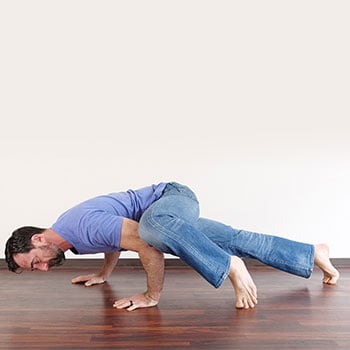Want to fix your posture? Sure you do. Otherwise, you wouldn’t be here.
And you probably think that whatever you’re doing right now is labeled as bad posture and that you should be doing something different to give you perfect posture.
Here’s something you should know before going any further. People often talk about posture in black and white terms.
Either they have a viewpoint about how certain posture should be and their method is the only way to correct it. Or, there’s a universal position that we’ve all regressed from since we came down from the trees and started playing with smartphones.
And it’s time to get back to how we evolved and be perfect in the anatomical sense.
We’ve already covered some of the posture myths. Those being:
- Everyone should aim for an “ideal” posture.
- Slouching (poor posture) always equals pain.
We know that there really is no such thing as ideal posture because humans vary in anatomical structures. So what’s good for you might not be great for your aunt Tilda.
And slouched posture won’t always equate to feeling pain over time. This is because pain is incredibly complex.
Instead, we want to look at something we call posture tolerance. And that is your ability to maintain positions for periods of time with relative ease or discomfort.

For example, if you’re used to sitting 10 hours per day, getting up and standing for longer than 30 minutes at a time might cause lower back pain or might make your feet hurt. And this could all happen while you stand with military-standard posture.
So, this isn’t because you’re in bad posture all the time.
In fact, you could be sitting at the perfect angle, with all the right ergonomic settings for your height and limb length, but still have this experience when standing or walking for long periods.
Useful Concepts But Only Just a Start
Back in 2001, there was an idea that you were classified into either being ‘extension’ or ‘flexion’ intolerant. Here’s how it would typically work, let’s say for back pain.
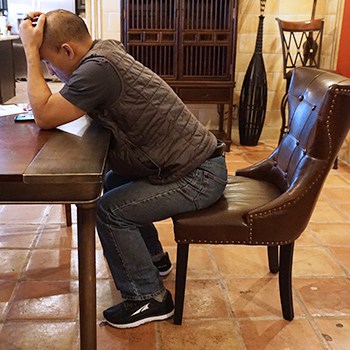 If you are ‘extension’ intolerant, that would mean any time you get into the extended position, ie: standing for longer periods, you would experience some back pain.
If you are ‘extension’ intolerant, that would mean any time you get into the extended position, ie: standing for longer periods, you would experience some back pain.
And this could apply to most people who are sitting long hours at work, in the car, on the bus, or spending a lot of time in chairs at home.
You spend a lot of time with your hips in the flexed position, so when you stand up and extend them, you experience back pain or other aches, despite being in an otherwise so-called perfect posture.
By the way, standing posture is highly variable between individuals with and without pain, so we can’t really rely on habitual posture to predict pain[1].
 If you are ‘flexion’ intolerant, that would mean any time you get into a flexed position, ie: sitting for long periods, you would experience back pain. This typically applies to the more active individuals, like athletes, manual laborers, and anyone who stands or walks most of their day.
If you are ‘flexion’ intolerant, that would mean any time you get into a flexed position, ie: sitting for long periods, you would experience back pain. This typically applies to the more active individuals, like athletes, manual laborers, and anyone who stands or walks most of their day.
You spend a lot of time with your hips extended, so when you sit down and get into the flexed position, you could experience discomfort or aches and pains. And this happens even though you’re standing upright most of the day, which would indicate you probably have decent posture given the practice.
Now there are a couple things that might be happening here. In the examples above, it could be that you’ve grown used to being in flexion or extension most of your day. And as such, you’ve grown less tolerant, or less conditioned for being in the opposite positions.
Or it could be that something happened and now those positions that were fine are now bothersome. It could be an injury or stress, or other things. You see, it can be tricky!
Now, while those categories can be helpful and give you a place to start addressing your issues, there’s more to it than just saying you are one way or the other.
Here’s what Steve Low has to say about posture:
“The best way to “fix” problematic postures is to build strength, control, and endurance in and out of the posture. Most different postures are only uncomfortable because you are not comfortable moving in and out of them as the body has built a “habit” of being in a specific position. To break that habit you need a movement and strength focused routine to get comfortable with less problematic postures.”
Our Bodies Adapt To The Real World
So, look. You know now that based on the science, that even the so-called perfect posture won’t save you from aches and pains. But here’s what can.
First, you want to think about your own varying levels of pain and discomfort you experience. And then think about how you go about your day, how you hold yourself, and if you’ve ever tried to make any changes.
Do you still feel stiff, or experience any pain or discomfort? Even if you stand up tall and have pretty good posture? If so, then it’s probably not your posture ruining your life.
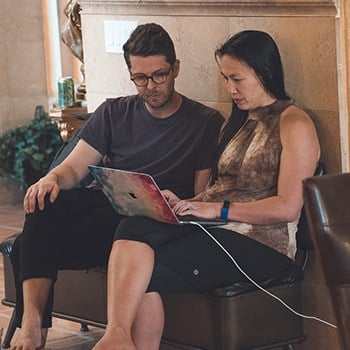 Our bodies are pretty good at adapting to various positions, especially over longer periods of time. And the less you put yourself into certain ranges of motion, the weaker your ability to get into specific positions will be.
Our bodies are pretty good at adapting to various positions, especially over longer periods of time. And the less you put yourself into certain ranges of motion, the weaker your ability to get into specific positions will be.
Let’s say you take a new job that has you sitting 8 hours per day while your previous job had you on your feet from start to finish. At first, you might notice some discomfort but in time, you probably won’t have any problems sitting so much.
As time goes on, your body adapts to being in the seated position instead of standing upright all day long. But then you might start noticing that your joints hurt when you go for long walks on the weekend.
But before, long walks were never a problem. Just in case we need to say it again. It’s probably not your posture. It’s more that you’ve gotten out of old habits and created new ones. And the new habits created new problems (even if your posture is perfect).
Also, something to note: you may have seen some fancy gadgets on social media you can wear that promise to fix your posture, and thus, fix your pain. But while those devices can fix your posture and make you stand up straight, they likely won’t get rid of pain you believe is associated with so-called poor posture [2].
So if it ain’t about fixing your poor posture, what is it?
Posture Is Repetitious And Evolving With You
The way you move and what you do daily has way more impact on your posture than simply standing up straight, or trying to sit perfectly with your feet flat on the floor at work in the most ergonomic way ever invented by the corporate overlords.
People maintain this so-called perfect posture because of how they move regularly, not because they’re constantly thinking about pulling their shoulders back.
And if you find yourself falling prey to some bad habits resulting in poor posture, we have slightly bad news… it’s going to require some patience and effort on your part to get your body to naturally sit into a position that resembles “proper posture.”
Remember, your posture is more about what you’re doing regularly than just trying to stand up straight, pull your shoulders back, and maintain an “ideal” posture all the time.
Speaking of moving regularly, this sums it up nicely:
Segments of the spine, like many other joints, have the capacity to move rather well, but stability is what will allow them to do so. Body weight training that emphasizes deep spinal strength, hip strength and breathing strength will yield an overall improvement in range of motion and quality of life. The strength that comes from this type of repetitive body training protects range of motion and yields near perpetual activation. — Dr. Eric Goodman
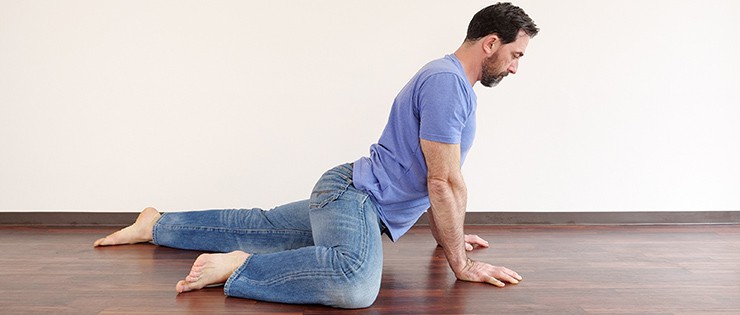
Assessing Yourself To ‘Fix’ Your Posture
Posture is more about what you do, rather than how you are. Sitting for long periods without getting up and out of the flexed position is sure to cause some issues down the line.
First, you’ll want to take some inventory of any discomfort you have and think about what you are doing most of the day. You’re either sitting mostly, or standing, or some combination of the two.
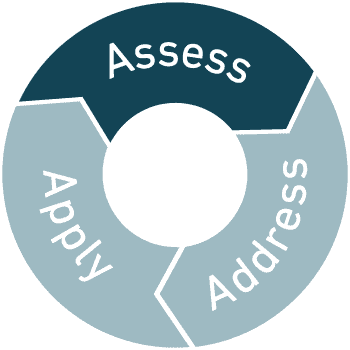 Next, you’ll want to consider some quick assessments you can do right this instant.
Next, you’ll want to consider some quick assessments you can do right this instant.
The goal of these assessments is to help you determine your needs so we can make the right recommendations for addressing and fixing them.
Assessment #1: Stand Up Tall (Extension)
Stand up, lift your chest up, and bring your arms overhead. Make sure you reach as far up and back as you can. Then lean back in this position and see how it feels.
Now, rate how easy this is on a scale of one to 10. One being, “this is really hard and painful,” and 10 being “this is easy and I could do this all day long.”
This assessment will show you how well you tolerate being in extension. This tends to correlate with how well you handle lots of standing and walking for long periods of time in the upright position.
Exercises For Improving Extension
- Kneeling lunge
- Cobra
- Crab

Now, let’s look at the opposing movement: flexion.
Assessment #2: Get Down On The Floor (Flexion)
Sit down on the floor with your legs outstretched in front of you and lean forward as much as you can. Rate this on the same scale we used above and see how it feels.
This movement will help you determine how well you can tolerate being in flexion. This will correlate with how long you can tolerate sitting, squatting, and any other positions where your body is folded over.
You might not do well with both assessments, but everyone tends to favor one position over the other.
Exercises For Improving Flexion
- Hamstring stretch
- Squat (check out our full squat tutorial)
- Bear crawl (getting down on all fours. read more about locomotion)
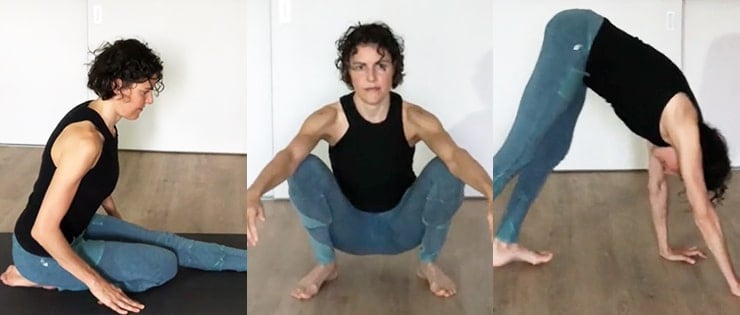
Let’s Improve Your Posture, Starting Today
In this video, Jarlo talks about posture and gives examples of the self-assessment movements for flexion and extension:
By now, you should have an idea of what needs improving. And you can see some examples of movements above that we recommend to improve flexion and extension.
But what if you had a systematic, results-based approach to improving your posture, fixing aches and pains, and moving better over all? You can, and it starts with learning how to move optimally with a practical, progressive mobility program.
Build Flexibility That Actually Helps You Move
GMB Mobility is a guided program that improves your total body mobility. You’ll resolve restrictions so you can finally move and perform your best.

